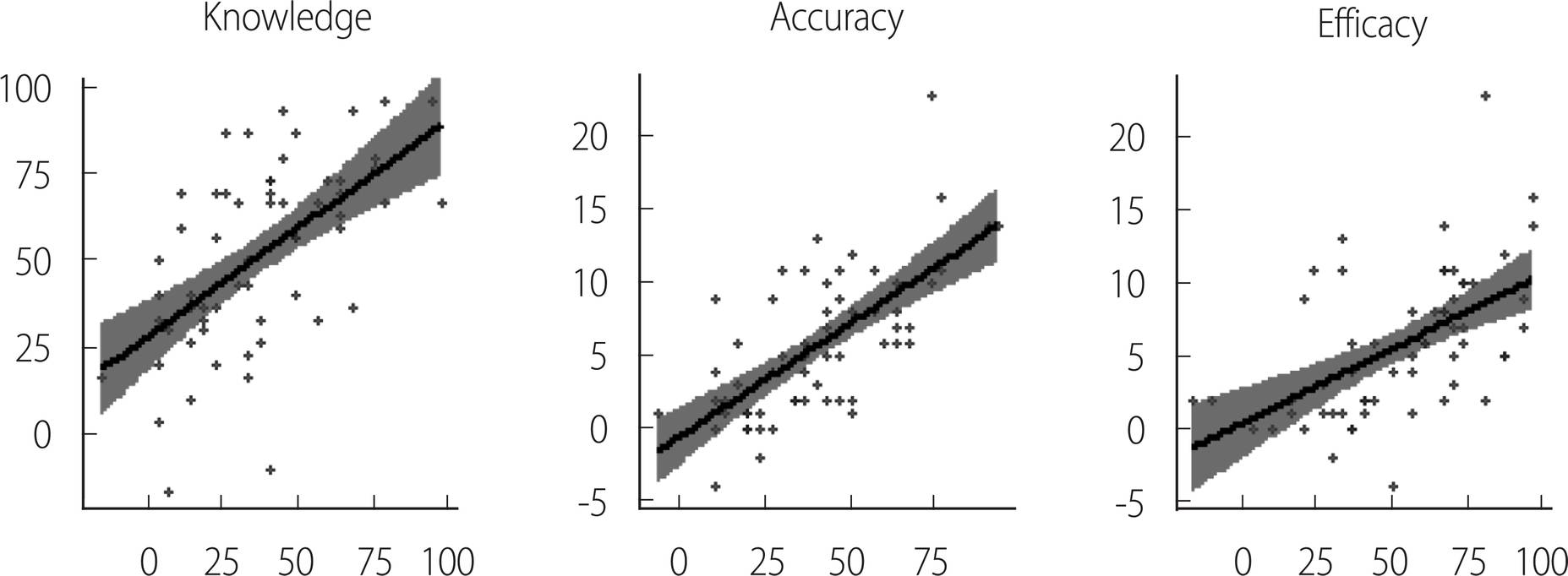1. Rudd KE, Johnson SC, Agesa KM, Shackelford KA, Tsoi D, Kievlan DR, et al. Global, regional, and national sepsis incidence and mortality, 1990-2017: analysis for the global burden of disease study. The Lancet. 2020;Jan 18 395(10219):200-211.
https://doi.org/10.1016/S0140-6736(19)32989-7

2. Torio CM, Moore BJ. National inpatient hospital costs: the most expensive conditions by payer, 2013: statistical brief #204. Healthcare Cost and Utilization Project (HCUP) Statistical Briefs 2016;Rockville (MD).
7. Nucera G, Esposito A, Tagliani N, Baticos CJ, Marino P. Physicians' and nurses' knowledge and attitudes in management of sepsis: an Italian study. Journal of Health and Social Sciences. 2018;3(1):13-26.
https://doi.org/10.19204/2018/phys2

8. Jeffery AD, Mutsch KS, Knapp L. Knowledge and recognition of SIRS and sepsis among pediatric nurses. Pediatric Nursing. 2014;40(6):271-278.

9. Stamataki P, Papazafiropoulou A, Kalaitzi S, Sarafis P, Kagialari M, Adamou E, et al. Knowledge regarding assessment of sepsis among greek nurses. Journal of Infection Prevention. 2014;15(2):58-63.
https://doi.org/10.1177/1757177413513816


10. Yousefi H, Nahidian M, Sabouhi F. Reviewing the effects of an educational program about sepsis care on knowledge, attitude, and practice of nurses in intensive care units. Iranian Journal of Nursing and Midwifery Research. 2012;2:Suppl 1. S91-S95.
11. Stiermaier T, Herkner H, Tobudic S, Burgmann K, Staudinger T, Schellongowski P, et al. Incidence and long-term outcome of sepsis on general wards and in an ICU at the general hospital of vienna: an observational cohort study. Wiener klinische Wochenschrift. 2013;125(11-12):302-308.
https://doi.org/10.1007/s00508-013-0351-1


18. Roshangar F, Azar EF, Sarbakhsh P, Azarmi R. The Effect of case-based learning with or without conceptual mapping method on critical thinking and academic self-efficacy of nursing students. Journal Of Biochemical Technology. 2020;11(1):37-44.
21. Low D, Clark N, Soar J, Padkin A, Stoneham A, Perkins GD, Nolan J. A randomised control trial to determine if use of the iResus(c) application on a smart phone improves the performance of an advanced life support provider in a simulated medical emergency. Anaesthesia. 2011;66(4):255-262.
https://doi.org/10.1111/j.1365-2044.2011.06649.x


22. Guo P, Watts K, Wharrad H. An integrative review of the impact of mobile technologies used by healthcare professionals to support education and practice. NursingOpen. 2016;3(2):66-78.
https://doi.org/10.1002/nop2.37


24. Delaney MM, Friedman MI, Dolansky MA, Fitzpatrick JJ. Impact of a sepsis educational program on nurse competence. The Journal of Continuing Education in Nursing. 2015;46(4):179-186.
https://doi.org/10.3928/00220124-20150320-03


25. Jin ES. Knowledge and Educational Needs related to Sepsis among Intensive Care Units Nurses [Master]. 2017. Ulsan, Korea (South): University of Ulsan.
26. Sherer M, Maddux JE, Mercandante B, Prentice-Dunn S, Jacobs B, Rogers RW. The self-efficacy scale: construction and validation. Psychological reports. 1982;51(2):663-671.
https://doi.org/10.2466/pr0.1982.51.2.663

27. Yang KM. Analysis of the relationship between the empowerment, the job-related individual characteristics and the work performance of nurses. Journal of Korean Academy of Nursing Administration. 1999;5(1):39-61.
29. Drahnak DM, Hravnak M, Ren D, Haines AJ, Tuite P. Scripting nurse communication to improve sepsis care. MedSurg Nursing. 2016;25(4):233-239.
30. Tromp M, Hulscher M, Bleeker-Rovers CP, Peters L, van den Berg DT, Borm GF, et al. The role of nurses in the recognition and treatment of patients with sepsis in the emergency department: a prospective before-and-after intervention study. International Journal of Nursing Studies. 2010;47(12):1464-1473.
https://doi.org/10.1016/j.ijnurstu.2010.04.007


31. Bi M, Zhao Z, Yang J, Wang Y. Comparison of case-based learning and traditional method in teaching postgraduate students of medical oncology. Medical Teacher. 2019;41(10):1124-1128.
https://doi.org/10.1080/0142159X.2019.1617414


32. McLean SF. Case-based learning and its application in medical and health-care fields: a review of worldwide literature. Journal of Medical Education and Curricular Development. 2016;3:39-49.
https://doi.org/10.4137/JMECD.S20377

34. Kaddoura MA. Critical Thinking skills of nursing students in lecture-based teaching and case-based learning. International Journal for the Scholarship of Teaching and Learning. 2011;5(2):Article 20.
https://doi.org/10.20429/ijsotl.2011.050220

37. Manaktala S, Claypool SR. Evaluating the impact of a computerized surveillance algorithm and decision support system on sepsis mortality. Journal of the American Medical Informatics Association. 2017;24(1):88-95.
https://doi.org/10.1093/jamia/ocw056


38. Kim MS, Park JH, Park KY. Development and effectiveness of a drug dosage calculation training program using cognitive loading theory based on smartphone application. Journal Korean Academy Nursing. 2012;42(5):689-698.
https://doi.org/10.4040/jkan.2012.42.5.689

40. Bibault JE, Leroy T, Blanchard P, Biau J, Cervellera M, Diaz O, et al. Mobile technology and social media in the clinical practice of young radiation oncologists: results of a comprehensive nationwide cross-sectional study. International Journal Radiation Oncology·Biology·Physics. 2014;90(1):231-237.
https://doi.org/10.1016/j.ijrobp.2014.05.012

41. De Bari B, Franco P, Niyazi M, Cornetto AP, Qvortrup C, Martin AN, et al. The pocketable electronic devices in radiation oncology (PEDRO) project: how the use of tools in medical decision making is changing? Technology in Cancer Research&Treatment. 2016;15(2):365-376.
https://doi.org/10.1177/1533034615572287

43. Mohamadirizi S, Kohan S, Shafei F, Mohamadirizi S. The relationship between clinical competence and clinical self-efficacy among nursing and midwifery students. International Journal of Pediatrics. 2015;3(6.2):1117-1123.
https://doi.org/10.22038/ijp.2015.5222

44. Shinnick MA, Woo MA. Does nursing student self-efficacy correlate with knowledge when using human patient simulation? Clinical Simulation in Nursing. 2014;10(2):e71-e79.
https://doi.org/10.1016/j.ecns.2013.07.006

47. Soper T. Knowledge into learning: comparing lecture, e-learning and self-study take-home packet instructional methodologies with nurses. NursingOpen. 2017;4(2):76-83.
https://doi.org/10.1002/nop2.73


48. Raurell-Torreda M, Olivet-Pujol J, Romero-Collado A, Malagon-Aguilera MC, Patino-Maso J, Baltasar-Bague A. Case-based learning and simulation: useful tools to enhance nurses' education? Nonrandomized controlled trial. Journal Nursing Scholarship. 2015;Jan;47(1):34-42.
https://doi.org/10.1111/jnu.12113







 PDF Links
PDF Links PubReader
PubReader Full text via DOI
Full text via DOI Download Citation
Download Citation Print
Print



